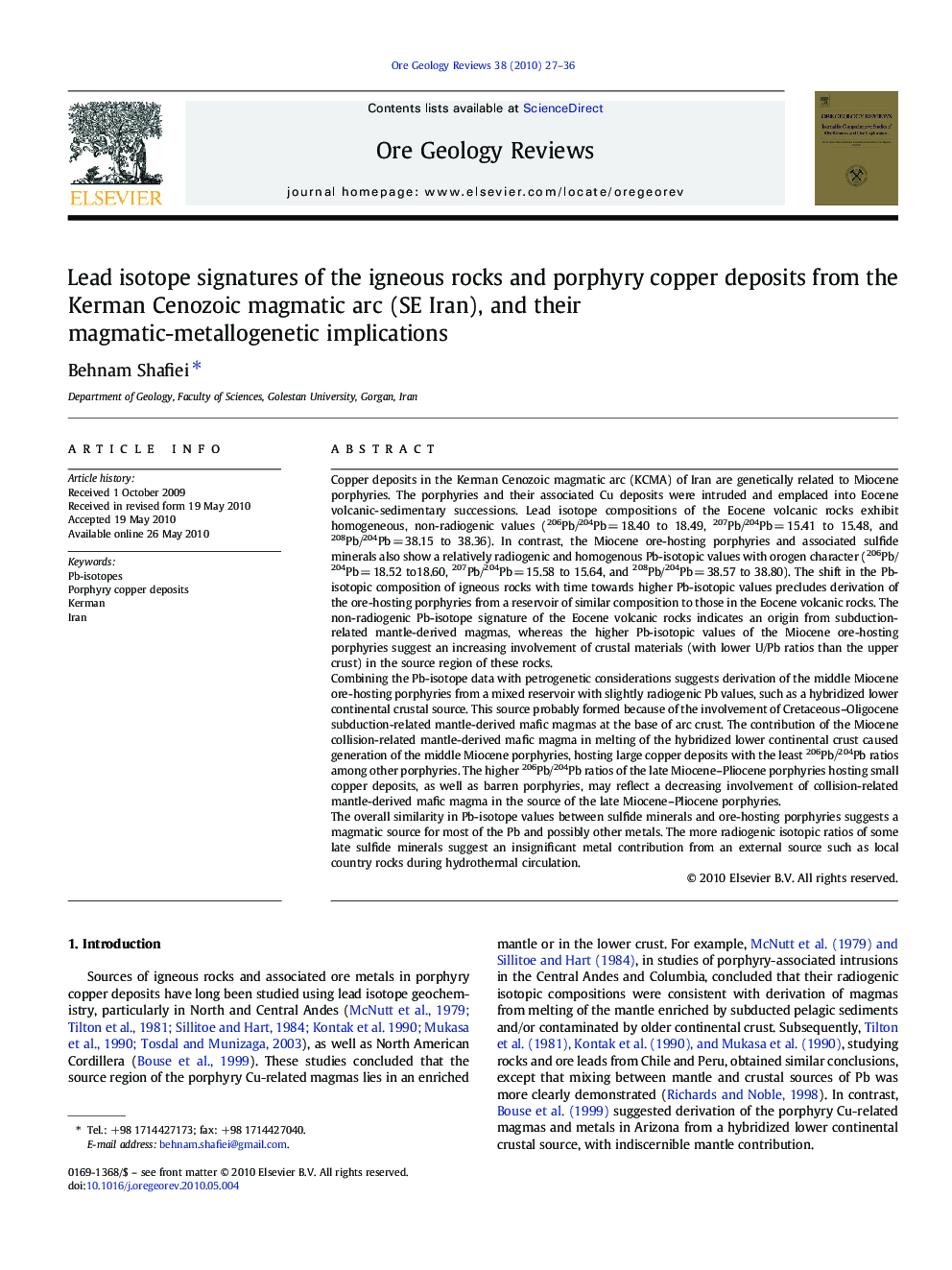| کد مقاله | کد نشریه | سال انتشار | مقاله انگلیسی | نسخه تمام متن |
|---|---|---|---|---|
| 4697841 | 1637262 | 2010 | 10 صفحه PDF | دانلود رایگان |

Copper deposits in the Kerman Cenozoic magmatic arc (KCMA) of Iran are genetically related to Miocene porphyries. The porphyries and their associated Cu deposits were intruded and emplaced into Eocene volcanic-sedimentary successions. Lead isotope compositions of the Eocene volcanic rocks exhibit homogeneous, non-radiogenic values (206Pb/204Pb = 18.40 to 18.49, 207Pb/204Pb = 15.41 to 15.48, and 208Pb/204Pb = 38.15 to 38.36). In contrast, the Miocene ore-hosting porphyries and associated sulfide minerals also show a relatively radiogenic and homogenous Pb-isotopic values with orogen character (206Pb/204Pb = 18.52 to18.60, 207Pb/204Pb = 15.58 to 15.64, and 208Pb/204Pb = 38.57 to 38.80). The shift in the Pb-isotopic composition of igneous rocks with time towards higher Pb-isotopic values precludes derivation of the ore-hosting porphyries from a reservoir of similar composition to those in the Eocene volcanic rocks. The non-radiogenic Pb-isotope signature of the Eocene volcanic rocks indicates an origin from subduction-related mantle-derived magmas, whereas the higher Pb-isotopic values of the Miocene ore-hosting porphyries suggest an increasing involvement of crustal materials (with lower U/Pb ratios than the upper crust) in the source region of these rocks.Combining the Pb-isotope data with petrogenetic considerations suggests derivation of the middle Miocene ore-hosting porphyries from a mixed reservoir with slightly radiogenic Pb values, such as a hybridized lower continental crustal source. This source probably formed because of the involvement of Cretaceous–Oligocene subduction-related mantle-derived mafic magmas at the base of arc crust. The contribution of the Miocene collision-related mantle-derived mafic magma in melting of the hybridized lower continental crust caused generation of the middle Miocene porphyries, hosting large copper deposits with the least 206Pb/204Pb ratios among other porphyries. The higher 206Pb/204Pb ratios of the late Miocene–Pliocene porphyries hosting small copper deposits, as well as barren porphyries, may reflect a decreasing involvement of collision-related mantle-derived mafic magma in the source of the late Miocene–Pliocene porphyries.The overall similarity in Pb-isotope values between sulfide minerals and ore-hosting porphyries suggests a magmatic source for most of the Pb and possibly other metals. The more radiogenic isotopic ratios of some late sulfide minerals suggest an insignificant metal contribution from an external source such as local country rocks during hydrothermal circulation.
Journal: Ore Geology Reviews - Volume 38, Issues 1–2, October 2010, Pages 27–36